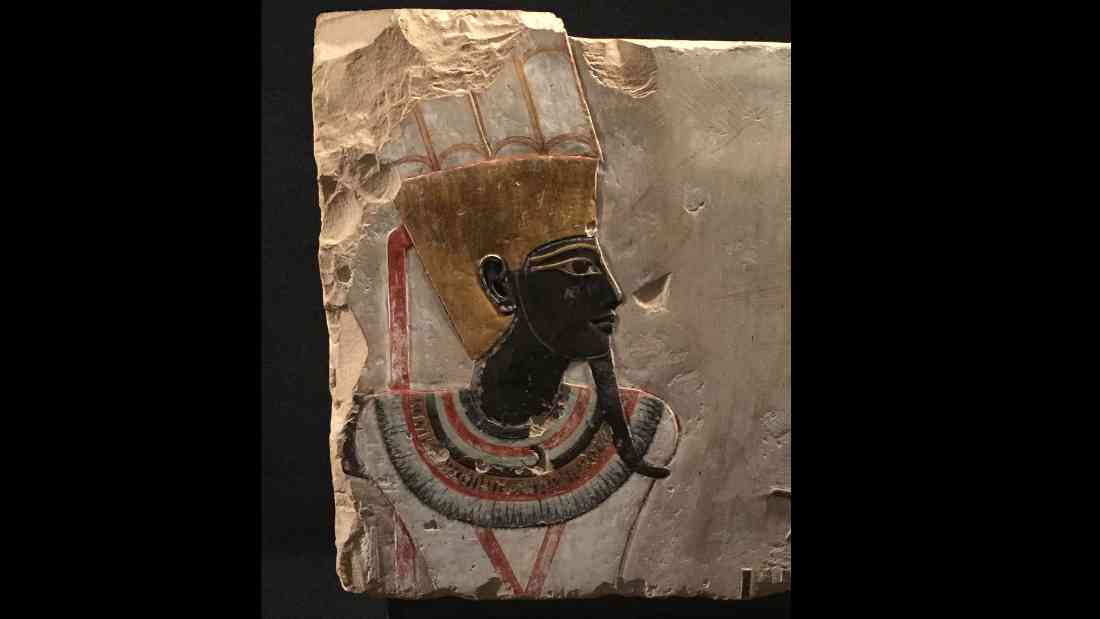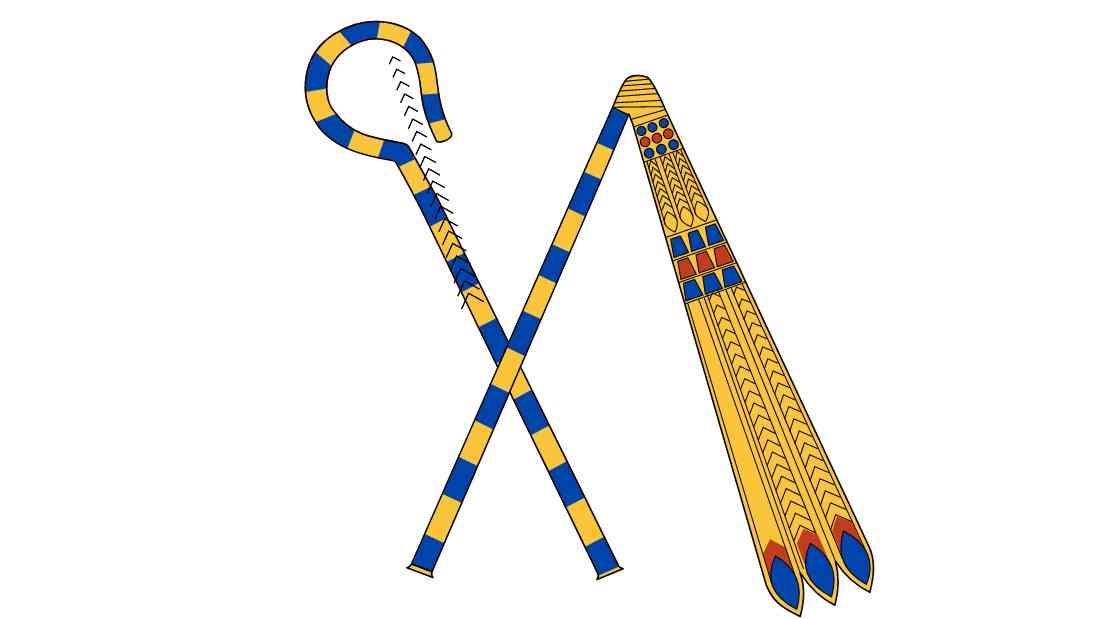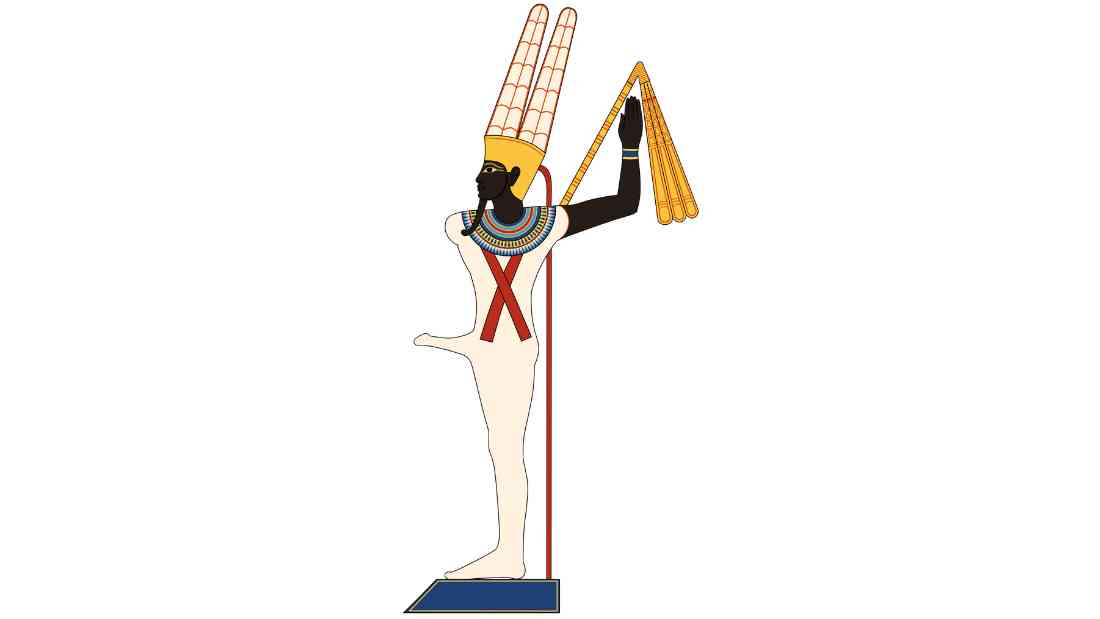The pantheon of Ancient Egyptian gods and goddesses is vast and fascinating, each deity holding dominion over various aspects of life, death, and nature. One such intriguing deity is Min, the Ancient Egyptian God of Fertility.
Who is Min?
Min, the Ancient Egyptian God of Fertility, is a deity whose roots reach deep into the antiquity of Egyptian civilization. His origins can be traced back to the Predynastic Period (6000-3150 BC), making him one of the oldest gods in the extensive Egyptian pantheon.
Primarily, Min was venerated as the god of fertility and agriculture. He was the divine entity who blessed the fields with abundant crops and ensured the continuation of life through procreation.
His role was of utmost importance in an agricultural society like Egypt, where the success of crops could determine the prosperity or decline of the entire civilization.
However, Min’s influence was not confined to agriculture and fertility alone. He was also revered as the god of male sexual potency, a role that further enhanced his image as a fertility deity.
This aspect of Min was often symbolized in his iconography, where he was depicted with an erect phallus, highlighting his virility and procreative power.
Min’s worship was widespread across ancient Egypt, transcending social classes and geographical boundaries.
From common people to Pharaohs, everyone sought his blessings for fertility, successful harvests, and sexual vitality.
His universal appeal was such that he earned prestigious titles like the “Chief of Heaven” and the “Protector of the Two Lands.”
These titles signify his supreme status among the gods and his protective role over Upper and Lower Egypt, thus reflecting his integral role in the spiritual life of the ancient Egyptians.
In a broader context, Min’s worship underscores the critical importance the ancient Egyptians placed on fertility, not just in terms of human reproduction and agricultural abundance, but also as a symbol of overall prosperity and continuity of life.

Iconography of Min
The iconography of Min, the Ancient Egyptian God of Fertility, is as distinctive and intriguing as the deity himself. His representations in Ancient Egyptian art are not only unique but also carry profound symbolic meanings that reflect his divine roles and attributes.
Min is often portrayed standing erect with one arm raised high, a posture that exudes an aura of authority and dominance. This pose is a testament to his high status among the gods and his dominion over fertility and agriculture.
In his raised hand, he usually holds a flail or a whip, an object typically associated with royalty and power in Ancient Egypt.
The flail in Min’s hand symbolizes his control over the forces of nature, particularly the fertility of the earth, which was crucial for the agricultural prosperity of the land.

In his other hand, Min is often depicted holding a lettuce, a vegetable considered sacred to him due to its association with fertility and procreation. This element of his iconography underscores his role as a fertility deity and his influence over the successful growth of crops.
Perhaps the most striking aspect of Min’s iconography is his depiction with an erect phallus. This bold representation is a clear and direct symbol of his association with sexual potency and virility. It emphasizes his role as the god of male sexual power, reinforcing his image as a potent fertility deity.
Furthermore, Min is usually depicted wearing a feathered crown, confirming his royal status among the pantheon of gods. His robe is often painted white, the color associated with purity and sacredness in ancient Egyptian culture.
Overall, the iconography of Min is a fascinating blend of symbolism and cultural beliefs.
Each element of his depiction – from his posture and accessories to his physical attributes – is carefully chosen to reflect his divine roles and the reverence the ancient Egyptians had for him.
The Cult of Min
The cult of Min was a pervasive and influential aspect of Ancient Egyptian society, transcending social classes and geographical boundaries.
Min’s worship was not limited to the common people. Even Pharaohs paid homage to him, seeking his blessings for bountiful harvests and numerous offspring.
This universal reverence led to the construction of several temples dedicated to Min throughout Egypt.
Two of the most prominent were located at Koptos and Akhmim.
The Temple of Min at Koptos
Koptos, now modern-day Qift, was one of the primary centers for the worship of Min.
The temple dedicated to Min was not just a place of worship, but also a significant cultural and religious landmark.
It was built with an elaborate architectural design that was typical of ancient Egyptian religious structures, with a series of pylons leading to sanctuaries where statues of Min were kept.
These statues were the focal points of worship during religious ceremonies.
In addition to its architectural grandeur, the Temple of Min at Koptos was also known for its rich collection of religious texts. These texts, inscribed on the walls of the temple, provided valuable insights into the rituals and beliefs associated with the cult of Min.
The Temple of Min at Akhmim
Akhmim, known in ancient times as Ipu or Khent-Min, was another important center for the cult of Min.
The Temple of Min at Akhmim was one of the largest and most magnificent temples in all of Egypt. It was so grand that it was often referred to as the “Splendid Temple” in ancient texts.
The temple complex included several courtyards, halls, and sanctuaries, each adorned with intricate carvings and reliefs depicting scenes from ancient Egyptian mythology, particularly those related to Min.
The temple was also home to a colossal statue of Min, which was the center of various rituals and festivals dedicated to the god.
Both the Temple of Min at Koptos and Akhmim played crucial roles in the religious life of ancient Egyptians. They served as important centers for the worship of Min, hosting various rituals and festivals that celebrated the god’s blessings of fertility and abundance.
The Festival of Min
The Festival of Min was one of the most significant religious events in Ancient Egypt, a grand celebration that marked the culmination of the harvest season.
This festival was not just an occasion to celebrate the bounty of the earth but also a time for the Egyptians to express their gratitude to Min, the god of fertility and agriculture, for his blessings.
Significance and Celebration
The Festival of Min was deeply rooted in the agricultural cycle of Ancient Egypt.
It was usually held at the beginning of the harvest season, a time when the crops were ripe and ready for reaping.
The timing of the festival underscores its significance as a thanksgiving event, where the Egyptians expressed their gratitude to Min for the successful harvests.
The festival was also a time to pray for prosperity in the coming year.
The Egyptians believed that by honoring Min and seeking his blessings, they could ensure abundant harvests and continued prosperity for their land.
Rituals and Offerings
The Festival of Min was characterized by elaborate rituals and offerings.
The centerpiece of the festival was a grand procession, where statues of Min were carried from the temple to the fields.
This procession was accompanied by music, dancing, and feasting, creating a festive atmosphere that permeated the entire community.

One of the key rituals during the festival was the offering of lettuce to Min.
Lettuce was considered sacred to Min because of its association with fertility. This vegetable was believed to be Min’s favorite food, and offering it to him was seen as a way to gain his favor and blessings.
In some instances, the Pharaoh played a central role in the festivities. He would ceremonially cut the first sheaf of grain, symbolizing the start of the harvest and showing his role as the earthly representative of Min.
Final Thoughts on Min, the Egyptian God of Fertility
Min, the ancient Egyptian god of fertility, holds a distinctive position in the pantheon of deities worshipped by the Egyptians. His unique iconography and the widespread reverence for him reflect the profound importance of fertility and agriculture in Ancient Egyptian society.
As a deity, Min embodies the vital forces of life and renewal. His association with fertility, procreation, and sexual potency symbolizes the cyclical nature of life and the sustenance of human and agricultural productivity. The erect phallus, a common element in his depictions, serves as a bold and direct symbol of these themes.
The temples dedicated to Min at Koptos and Akhmim stand as monumental testimonies to his significance. These structures were not just places of worship but also centers of cultural and religious activities that reinforced communal bonds and societal values.
The worship of Min in ancient Egypt reflects the Egyptians’ understanding of the natural world, their appreciation for its bounties, and their hopes for continued prosperity. Min, therefore, is not just a god of fertility. He is a symbol of life, abundance, and the enduring resilience of the human spirit.

Frequently Asked Questions about the Ancient Egyptian God Min
Min is a god in Ancient Egyptian mythology associated with fertility, agriculture, and sexual potency. He was widely worshipped for his blessings of bountiful harvests and procreation.
Min is often depicted in a distinctive manner: standing with an erect phallus and holding a flail (an agricultural tool), symbolizing his association with fertility and agriculture. Lettuce, considered Min’s favorite food, is another symbol associated with him due to its connection with fertility.
Two of the most prominent temples dedicated to the Egyptian god Min were located at Koptos and Akhmim in Egypt. These temples served as significant cultural and religious landmarks and were important centers for the worship of Min.
The Festival of Min was a grand celebration held during the harvest season in Ancient Egypt. This festival was a time for Egyptians to express their gratitude for successful harvests and to pray for prosperity in the coming year. The festival involved processions, music, dancing, feasting, and offerings of lettuce to Min.
Lettuce was considered sacred to Min because of its association with fertility. Offering lettuce to Min during the Festival of Min was seen as a way to gain his favor and blessings for abundant harvests.
Pharaohs paid homage to Min, seeking his blessings for bountiful harvests and numerous offspring. During the Festival of Min, the Pharaoh often played a central role in the festivities, including ceremonially cutting the first sheaf of grain to symbolize the start of the harvest.
Posts About the Egyptian Pantheon of Gods
The Pantheon of Ancient Egyptian Gods – A Comprehensive Guide
The Wrath of Montu – The Mythology of the Egyptian War God
Egyptian God Ammit – The Eater of Hearts in Ancient Egyptian Mythology
The Nightly Journey of Khonsu – The Ancient Egyptian God of the Moon
Ihy – The Joyful Ancient Egyptian God of Music
Min – The Ancient Egyptian God of Fertility
The Egyptian God Anubis – His Evolution from Son of Ra to Protector of the Dead
Unraveling the Mysteries of Babi – The Ancient Egyptian Baboon God
Ra, the Egyptian Sun God – Symbolism and Significance in Ancient Egyptian Culture
Sobek: The Ferocious Crocodile God of Ancient Egypt
The Enigmatic Mythology of Horus, the Egyptian Sky God
The Egyptian God Set – Protector of the Desert and Lord of Conflict
The Ancient Egyptian God Medjed: The Guardian of Osiris and the Afterlife
Anput, the Wife and Female Version of Anubis
Selket – The Scorpion Crowned Egyptian Goddess
Shu – The Egyptian God of Air, Wind, Peace and Lions
Hapi the Androgynous Ancient Egyptian God of the Nile
The Egyptian Sky Goddess Nut: Myth and Symbolism
The 42 Laws of Maat: The Moral Principles of the Ancient Egyptians
The Ancient Egyptian Goddess Mut: The Maternal Power in Egyptian Mythology
The Warrior Goddess: Neith in Ancient Egyptian Mythology
The God Bes: The Joyful Dwarf Deity in Ancient Egyptian Culture
The Egyptian Gods of Love: Hathor and Isis in Ancient Egyptian Mythology
Confronting the Serpent: The God Apep, the Nemesis of Ra in Egyptian Myth

